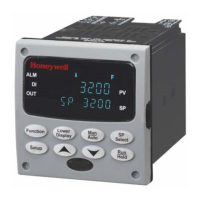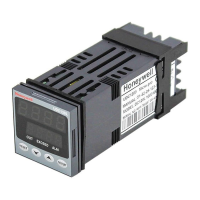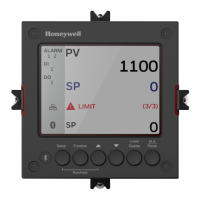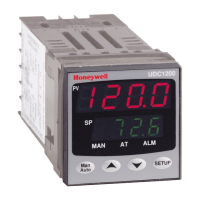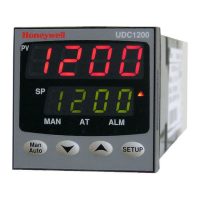Configuration
3/07 UDC3500 Universal Digital Controller Product Manual 75
Function Prompt
Lower Display
Selections or
Range of Setting
Upper Display
Parameter
Definition
TUNE+PV
DEMAND TUNING PLUS PV ADAPTIVE
TUNING—This selection provides “TUNE” on
demand tuning plus PV Adaptive tuning whenever a
PV process disturbance equal to or greater than
0.3% of span occurs. After a disturbance of 1.5
process cycles around the Setpoint occurs, this
selection will initiate a recalculation of the Tuning
parameters.
SP+PV
SETPOINT TUNING PLUS PV ADAPTIVE
TUNING—This selection tunes whenever the SP is
changed plus performs a PV Adaptive Tune
whenever a PV process disturbance equal to or
greater than 0.3% of span occurs. After a
disturbance of 1.5 process cycles around the
Setpoint occurs, this selection will initiate a
recalculation of the Tuning parameters.
ATTENTION When SP Tune is active (T displayed)
the Tuning Group parameters cannot be changed.
DUPLEX
DUPLEX ACCUTUNING III—These prompts only
appear when a duplex output type has been
configured and TUNE or TUNE+PV has been
selected.
MANUAL
MANUAL—Tune manually using LSP 1 and LSP 2
values. LSP 1 is used to derive tuning parameters
associated with HEAT (output > 50 %). LSP 2 is
used to derive tuning parameters associated with
COOL (output < 50 %).
AUTO
AUTOMATIC—Tuning is performed automatically on
both HEAT and COOL sequentially. LSP 1 is used
for HEAT tuning and LSP 2 is used for COOL tuning.
To initiate tuning, either LSP 1 or LSP 2 must be in
use.
DISABLE
DISABLE—The current Setpoint is used to derive a
single set of blended tuning parameters. This tuning
is performed over the range of the output limits
similar to Simplex Tuning. The Tuning Parameters
derived are placed into both the HEAT and COOL
tune sets (PID 1 and PID 2).
SP CHANG
5 to 15%
SETPOINT CHANGE—This prompt appears only
when SP or SP+PV has been selected. This is the
minimum Setpoint change on Loop 1 that will result
in a re-tuning process.
For example, if the SP range is 0 to 2400 and
Setpoint change is set to 5%, then a re-tuning
process will take place whenever the SP is changed
by 120 or more.
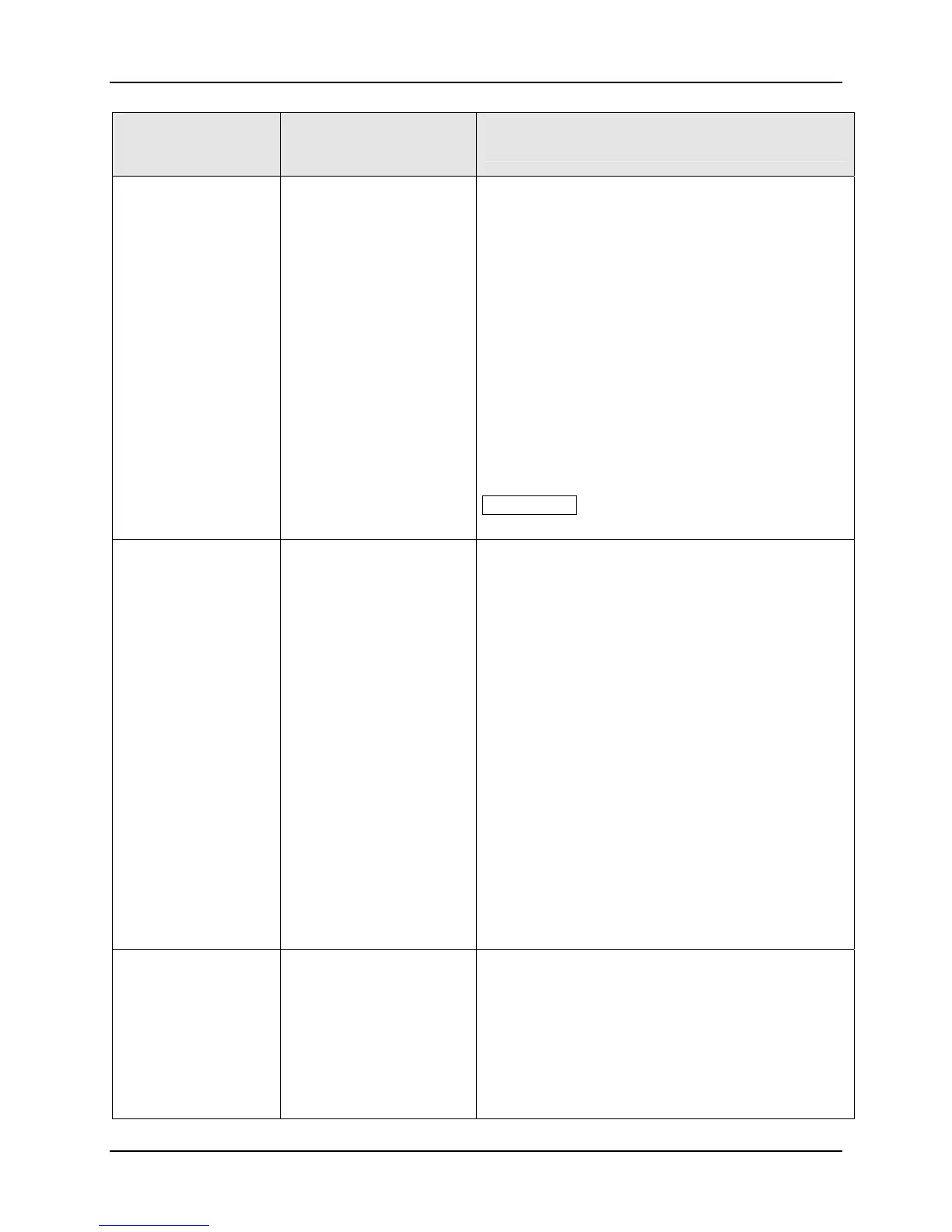